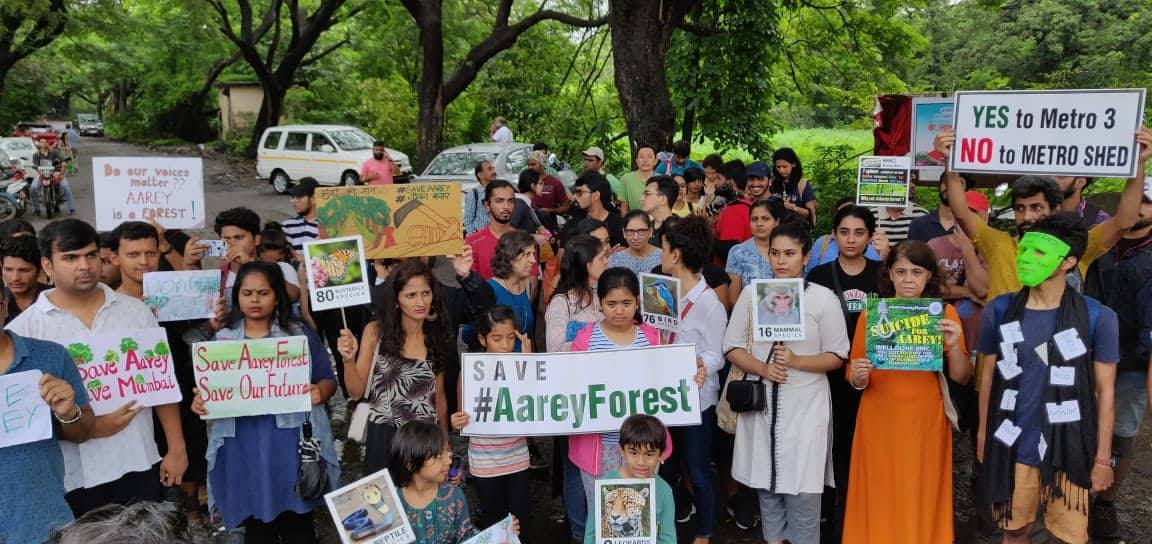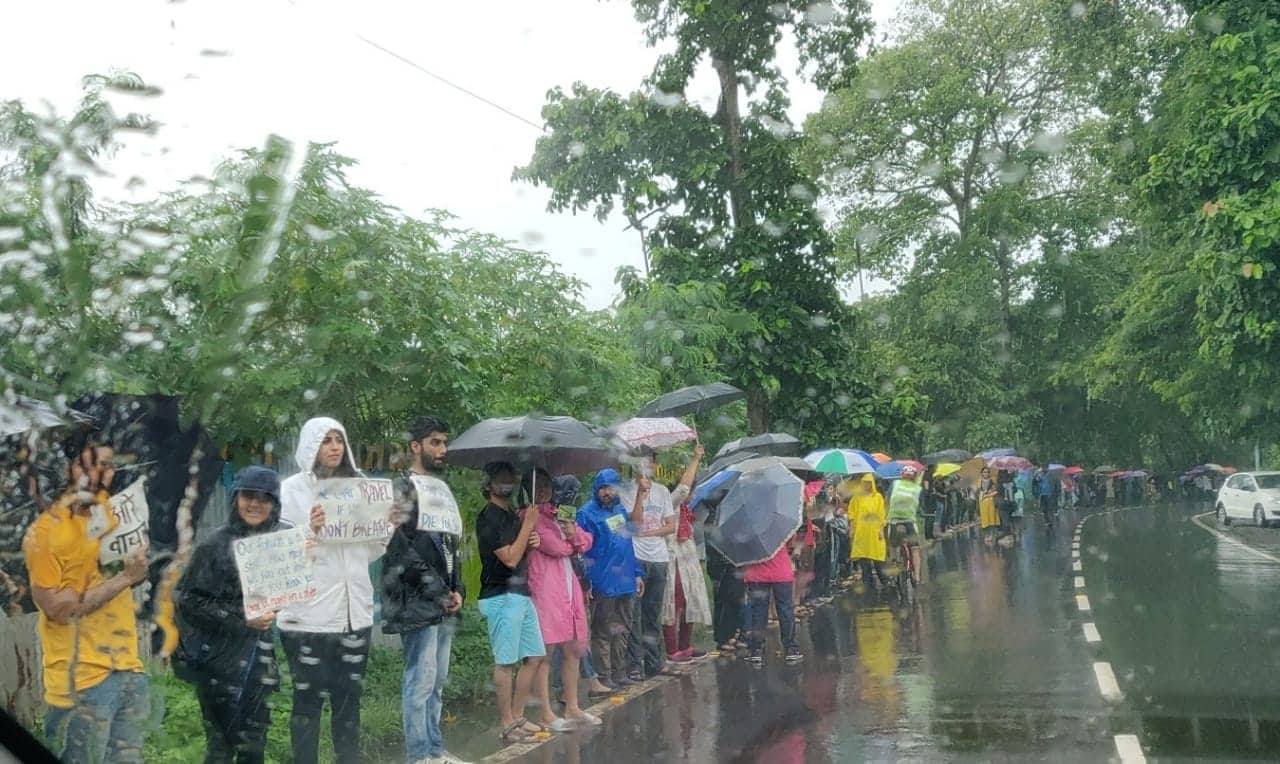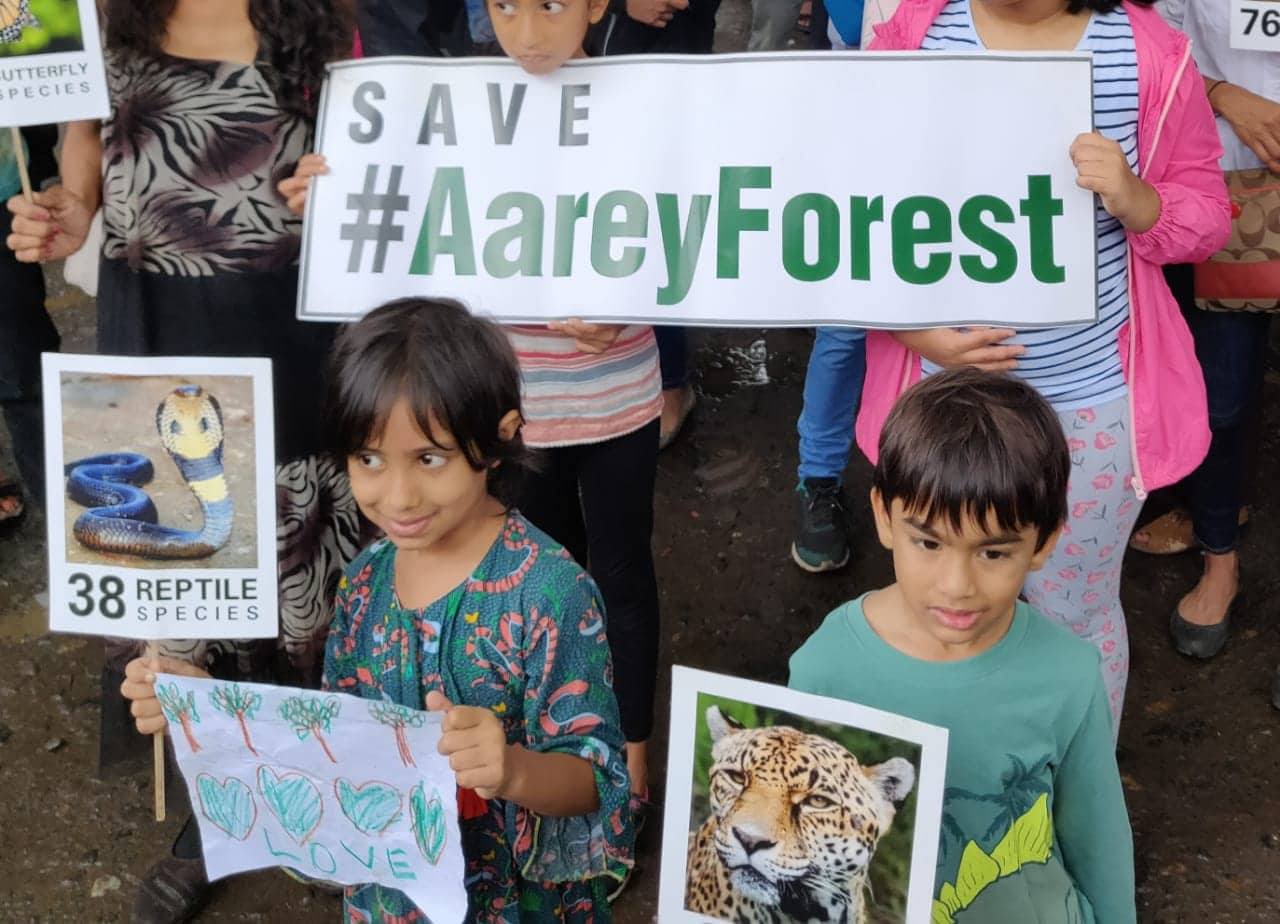By Salonika Neupane / Photos: Jalpesh Mehta (Empower Foundation) via Let India Breathe
Deforestation has been a major contributing factor towards environmental problems. Trees, in addition to providing oxygen, also sequester carbon. By cutting down trees, the amount of carbon dioxide in the atmosphere increases sharply, contributing to the problem of greenhouse effect.
Despite these often irrevocable damages, a 2015 study estimates that a total of 46% of trees have been felled since humans began cutting down trees. Deforestation often occurs due to commercial logging, or to turn the forest land for agricultural purposes (as is the case with the current deforestation in Amazon rainforest). In developing countries, a major cause of deforestation is the supposed development projects. These projects are often masked as an essential part of development, and any group opposing these projects are labeled “anti-development”, which makes it even more difficult for people to begin to question the necessity of the projects. Those who do resist have to spend valuable time and energy fighting off these labels.
 In India and Nepal, two “development” projects have been proposed that require felling of trees. In Mumbai, over 2600 trees in the Aarey area are to be felled to build a car shed (parking garage) for the Mumbai Metro Rail Corporation (MMRC). Aarey is a lively forest with a thriving natural community (aka ecosystem). Yet, Bombay High Court has failed to acknowledge Aarey as a forest. Meanwhile in Nepal, the ring road (encircling the Kathmandu valley) is set for its second phase of road expansion that is going to cut more than 2000 trees.
In India and Nepal, two “development” projects have been proposed that require felling of trees. In Mumbai, over 2600 trees in the Aarey area are to be felled to build a car shed (parking garage) for the Mumbai Metro Rail Corporation (MMRC). Aarey is a lively forest with a thriving natural community (aka ecosystem). Yet, Bombay High Court has failed to acknowledge Aarey as a forest. Meanwhile in Nepal, the ring road (encircling the Kathmandu valley) is set for its second phase of road expansion that is going to cut more than 2000 trees.
Both of the projects have been presented as a necessity for transportation of local people. But the general news fail to address some important facts. For example, in Mumbai, the Aarey forest is being cut down for a car shed of MMRC, not for the railways itself. Railways may play a significant role for the general public of Mumbai, but the car shed does not. On top of that, the MMRC is said to plant 100 times more trees than they cut down. Granting the naiveté of believing in that promise, saplings cannot replace an entire natural community.
Similarly, the road expansion of ring road is sold out as a magical solution to the problem of overcrowded traffic in Kathmandu. None of the residents in Kathmandu would debate that overcrowding of traffic is not a problem in Kathmandu. Yet, time and again it has been demonstrated that road expansions are only a temporary solution to the problem. Within a few years, the number of private vehicles also rise, culminating in the problem of overcrowded traffic of similar, if not worse, intensity. Not to mention, the initial phase of road expansion has caused a sharp increase in the number of road accidents in Kathmandu, causing the recently expanded area to be called the “death trap”.
The deforestation has not gone unnoticed in both of the cities. Environmental groups and local people have both protested against both of these. The intensity of public support for protest is stronger in Mumbai than in Kathmandu, with politicians and celebrities coming up against the proposed deforestation in Mumbai.
Yet, deforestation in both of these areas have begun despite the protests. After the Bombay High Court permitted the project to continue on Friday, MMRC workers began to cut down trees in the middle of the night. The time was chosen so that protesters would not be able to protect the forest. The next day, cutting down trees continued with police protection despite the protests. Many of the activists were arrested. On Monday, the Supreme Court of India issued a stay order in the tree-felling, but over 2100 trees have already been cut.
 In Kathmandu, cutting down trees began during a major festival of the country. Kathmandu, being the capital, is populated with many immigrants from all over the country. During this time, most return to their natal homes to celebrate the biggest festival of the year with their family and relatives. As a result, the valley is relatively sparsely populated. It was during this opportunistic period that felling of trees began.
In Kathmandu, cutting down trees began during a major festival of the country. Kathmandu, being the capital, is populated with many immigrants from all over the country. During this time, most return to their natal homes to celebrate the biggest festival of the year with their family and relatives. As a result, the valley is relatively sparsely populated. It was during this opportunistic period that felling of trees began.
Protests against deforestation has been rising globally, which may have had an influence in the protests in Mumbai and Kathmandu as well. The Climate Strike movements initiated by Greta Thunberg has helped spark a discussion against climate change in general. Thus, people have become more aware regarding environmental issues. Similarly, people across the world have been opposing the plan for the Brazilian government to allow agricultural industry to clear parts of the rainforest. It has helped bring attention to the significance of forests. Indigenous people have always resisted against the felling of trees. In some cases, indigenous communities have taken matters into their own hands to prevent illegal logging.
Effective strategies often need to address the specific nature of the problems within each context. While the two problems (in Mumbai and Kathmandu) appear similar, there are some major differences. Protests in Mumbai has been able to attract a very high number of supporters, which unfortunately is not the case in Kathmandu. With an exception of environmental groups and a minority of people, it seems the general public have accepted roads expansion as a miraculous cure to the problem of overcrowding of traffic.
As such, the two problems also require different strategies for action. For the Aarey conversation, what is required now is to provide tools to the protesters, like legal support. For the people in Kathmandu, a more basic approach is required: to get the people to question the necessity and fruitfulness of the road expansion in the first place.
References
Choudhary, Amit Anand, & Mehta, Manthan K. (2019, October 8). SC stays tree-felling at Aarey till October 21, but 98% already cut. Published in The Times of India. Accessed from https://timesofindia.indiatimes.com/india/sc-stays-tree-felling-at-aarey-till-october-21-but-98-already-cut/articleshow/71485076.cms
Crowther, T. W. et al. (2015). Mapping tree density at a global scale. Nature, 525, 201-205. Abstract available at https://www.nature.com/articles/nature14967
Ojha, Anup. (2018, May 26) Ring Road part ‘death trap’. Published in The Kathmandu Post. Accessed from https://kathmandupost.com/national/2018/05/26/ring-road-part-death-trap


1. Humans have been killing trees and destroying forests since the start of civilization, which is a result of using agriculture instead of living as hunter-gatherers. So as usual, agriculture is at the root of the problem. Much if not most of the desert in the Middle East was forest before humans started killing the trees.
2. Killing trees, or even A tree, is totally immoral and ecologically destructive. We shouldn’t kill anything we don’t eat, and no one eats trees. A tree has as much right to live as any human. Moreover, trees and their forests are the natural basis of much if not most terrestrial life on Earth, so killing them harms other species in addition to the killed trees. (I said “natural basis” because so much native forest has now been destroyed.)
3. “[O]vercrowded traffic” is not a problem, driving and overpopulation are. As to driving, we need to eliminate industrial living, and a good first step toward that goal would be for people to give up driving private motor vehicles. Organize your life so you don’t have to drive, and then walk, bike, and take public transit. This is merely a first step, elimination of industrial living would mean that transportation over land would be limited to walking and possibly riding horses (big issue whether it’s OK to domesticate any animal, including horses for riding). As to overpopulation, it and overconsumption (the latter of which includes consuming things that we should not be, like fossil fuels and trees) are the physical root causes of all environmental and ecological problems. So in addition to the fact that we should not be living industrially, the fact that there are way too many people is the cause of “overcrowded traffic,” and building more roads won’t solve that problem (roads fill up as soon as they’re built, and then you have even more roads with “overcrowded traffic”). India’s biggest problem by far is overpopulation, and unlike China, India is doing nothing about it. Lowering its population greatly should be India’s priority, not relieving traffic congestion.
Convincing people that their priorities are backward and that their materialistic desires and failure to control their breeding are wrecking the planet is hard, to say the least. I haven’t yet met, heard, seen, or read anyone with a solution to this, but we have to keep trying. The alternative is turning the Earth into a dead planet, which we’re well on the way to doing.
Thanks Jeff, for your points. I couldn’t agree more with you.
Being anti-civilization myself, I do not think it is right to prioritize “overcrowded traffic” as a problem over ecological genocide. In fact, if and when we actually start living sustainably, it would cease being an issue at all, because like you said, transportation would be limited to walking.
As for the problem of traffic in Kathmandu (which is where I live), I guess it is more related to a lack of public transit than with overpopulation. Owning a private vehicle has become a status symbol. Twenty years back, only relatively wealthy people could have afforded them. But now, due to provision of auto loans (as well as availability of cheap products), more people are being able to afford private vehicles. Even economically, auto loans make zero sense in the context of Nepal, given that all vehicles have to be imported and Nepal is already facing a very high trade deficit. Some recent changes has made public transport even less convenient in the city, pushing more people towards private vehicles. Having lived in a corrupt system, the stupidity in policy decisions do not even surprise me anymore.
In this particular context, I think the biggest challenge is to get people to look beyond their personal convenience to question their policies based on long-term consequences (maybe not all people, but at least enough to pressure governments to overturn some of their decisions). As you said, I realize there is no prescribed solution to this, which means we need to be persistent in our efforts.
The question isnt about felling of trees but its the intention. In the perspective of the ring road for kathmandu, the designated authorities are vying for highway which is not required in an urban area. Secondly, the design of the road is not people centric rather it is car friendly which has been inviting more and more accidents. The best solution to it is tactical urbanism where technical experts and consultants go infront of the public and take their opinion on the design of the road and what ammendments needs to be made.
@Nivesh
Did you know that Deep Green Resistance is fundamentally opposed to civilization? Did you know that “civilization” means, among other things, urban areas and urban living? Did you know that eliminating civilization means, by definition, eliminating industrial living, such as cars and their roads?
Your positions are basic mainstream positions, as opposed to those advocated here. We strongly and unequivocally oppose industrial society, and most if not all of us oppose killing native trees for any reason. Saying that the issue “isn’t about felling of trees” is totally false; in fact, it’s by far the biggest issue here.
@jeff
There are always two sides of the coin and the way you or deep green resistance see civilization i would say it is agreed but to just thinking about trees and adovcating for it with a full stop dosent make sense to me. It should be a gradual process to have the environment back so i wanted to start with a comma.
Kudos!